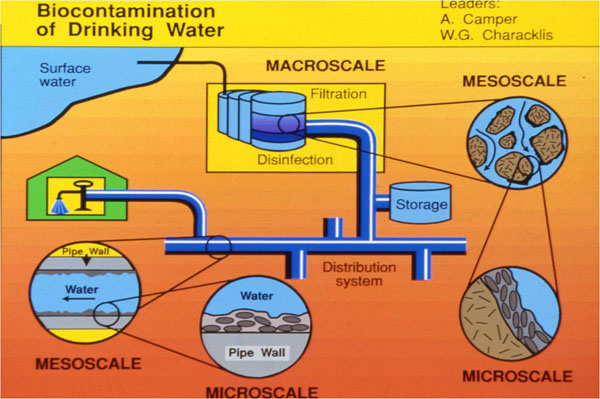A substantially updated version of the hypertextbook is available here. Please migrate to that version. This one will eventually disappear.
LeftBarBiofouling-Biocorrosion in Industrial Water Systems
Frequently asked questions by industrial practitioners interested in biofouling and biocorrosion include: What environmental conditions promote biofouling? Where (in a particular industrial water system) is biofouling likely to occur? How do biofilms influence corrosion? What are strategies for controlling biofilm accumulation and biocorrosion? It is obvious from this list of questions that the general concepts of biofilm detection, quantification and control are underlying themes.
Biofilms in Drinking Water Systems
Consider now the type of biofilm-related issues relevant to treatment and distribution of drinking water. Although drinking water systems are typically much lower in organic carbon than industrial water systems. Biofilms never the less can develop in the treatment system as well as along distribution lines. These biofilms can potentially impact the transport and fate of pathogenic bacteria which may be introduced into the system.

Questions typically of concern to the drinking water industry include:
What are background levels (Detection, Quantification) of biofilm in drinking water systems?
Are pathogens present? (Identification of heterotrophs vs coliforms)
How do existing biofilms affect transport and fate of pathogens introduced into pipelines?
Can pathogen transport be Controlled?
As in the case of industrial water systems the theme areas (shown in red) are related to detection, quantification and control. Identification of specific bacterial strains (especially pathogens) is also important to the drinking water industry.
